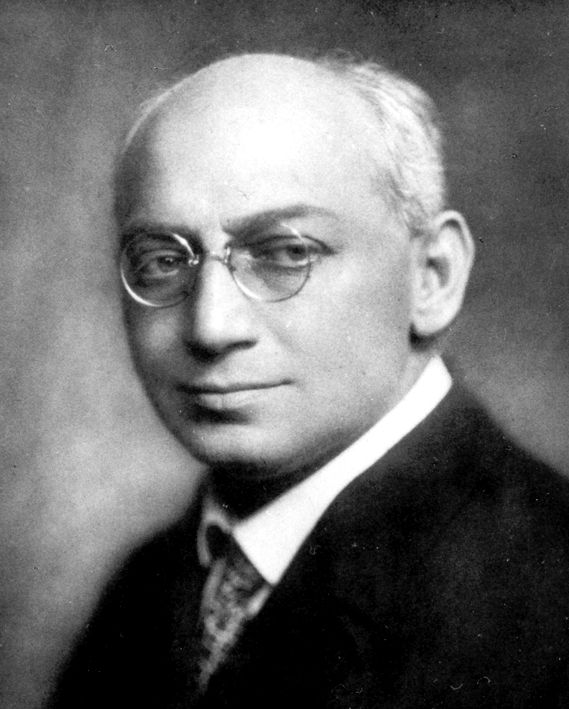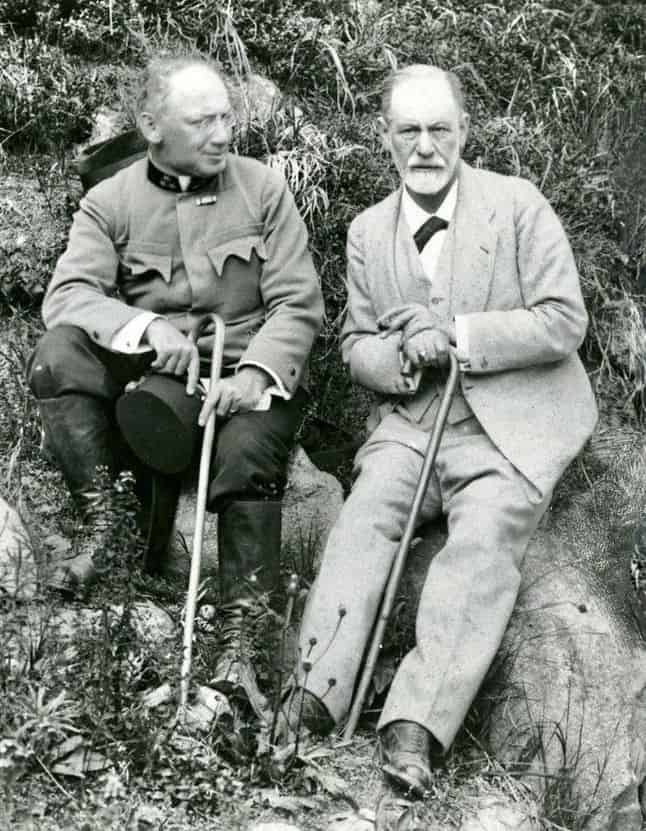
Sándor Ferenczi was a neurologist, psychoanalyst, and a close associate of Sigmund Freud. He became famous for his contributions to psychoanalytic theory and the exploration of innovative therapeutic techniques. He was one of the closest and dedicated Freuds supporters.
Personal Life
Ferenczi was born on the 7th of July 1873 in Miskolc, Austria-Hungary. He was the eighth child among eleven siblings, born to parents Baruch Fraenkel (who later adopted the name Bernát Ferenczi), a bookseller, printer, and ticket agent, and Róza Eibenschütz. Both of his parents were of Jewish descent and originally from Galicia, today’s Poland. His early years were marked by challenges.
Ferenchi’s father died when he was fifteen. The relationship with his mother was ambivalent. He felt like he wasn’t her favorite child which affected his selfesteem for years. He never resolved the relationship with his mother.
During his adult life, Ferenczi was part of a social circle that included writers and artists. He actively participated in Budapest’s modernist cultural scene. His role as a spokesperson for Freudian ideas found favor among writers but faced opposition from medical doctors.
The Early Complications of Contatransference
Around 1900, Sándor Ferenczi fell in love with Gizella Pálos. Gizella had two daughters from a previous marriage, Elma and Magda. In 1912, Elma’s fiancé tragically took his own life.
To help Elma deal with that situation, Gizella asked Ferenczi to take her into psychoanalysis. During these sessions, Ferenczi fell in love with Elma. Soon after, Ferenczi proposed to Elma, and Gizella accepted the engagement. After a few weeks, Elma broke the engagement.
Elma was sent to Freud for psychoanalysis and Gizella and Ferenczi continued their love affair and married. Freud was an advocate of the relationship between Ferenczi and Gizella and played a part in bringing them together. Ferenczi blamed Freud for intervening in his private life. He is believed to have mourned his failed love affair with Elma for all his life.
Sándor Ferenczi’s Scientific Career
Ferenczi studied medicine at the University of Vienna, graduating in 1894. Afterwards, he served as an army doctor where he specialized in neurology and neuropathology. However, his Jewish background hindered well-paid employment. He worked in a hospital helping the poor, prostitutes, criminals, and other disadvantaged individuals.
This experience profoundly shaped Ferenczi’s perspective. It drove him to advocate for improved hospital working conditions. He strongly objected to the doctor-patient relationship’s vertical hierarchy. Ferenczi believed that physicians should engage with patients, respecting their opinions instead of assuming superiority.
Ferenczi established the Hungarian Psychoanalytic Society in 1913. By 1919, he assumed a full-time professorship at the University of Budapest. Additionally, he played a role in the founding of the International Journal of Psychoanalysis and served as president of the International Psychoanalytic Society.
Sándor Ferenczi and Sigmund Freud

Ferenczi read Freud’s “Interpretation of Dreams” shortly after its publication but was not impressed. However, after embracing Carl Gustav Jung‘s association test, he became more open to Freud’s ideas.
In 1908, Ferenczi met Freud, becoming part of Freud’s inner circle and the Vienna Psychoanalytic Society. This marked the beginning of their enduring friendship and collaboration. Freud took Ferenczi into psychoanalysis at Ferenczi’s request. Ferenczi often accompanied Freud on various trips, including the yorney for the famous lecture one to Clark University in 1909.
Their extensive correspondence, totalling around 1,400 letters, greatly impacted the history of psychoanalysis. In April 1908, at the inaugural psychoanalytic meeting in Salzburg, Ferenczi presented his paper, “Psychoanalysis and Pedagogy,” marking the first psychoanalytic work on the topic. However, towards the end of his career, Ferenczi diverged from mainstream psychoanalytic theory, leading to a rupture with Sigmund Freud.
Ferenczi’s Main Ideas
Introjection
In 1909, Ferenczi released his first theoretical work titled “Introjection et transfert”, coining the term introjection. He defined introjection as the process of incorporating experiences into the psyche. He believed that introjection had a profound impact on identity. Positive introjections involved loving and nurturing experiences which contributed to a healthy psychological development. Whereas, negative introjections including neglect, criticism, and trauma, lead to emotional disturbances and neuroses.
Active Role of the Analyst
Ferenczi differed from Freud by advocating an active role for the analyst. Instead of passive listening and free association (encouraging the patient to speak freely, sharing any thoughts, even if they seem embarrassing, illogical, or unrelated). Ferenczi sometimes restricted the patient’s responses to uncover suppressed thoughts.
Empathy
Around 1929, Ferenczi shifted his therapeutic approach. He emphasized a nurturing, permissive therapist-patient relationship. This approach, advocating affection and encouraging patients to act out childhood experiences, drew criticism from other psychoanalysts, including Freud. Freud cautioned against potential sexual affairs resulting from such affection. In contrast, Ferenczi believed in fostering a genuine, affectionate therapist-patient connection for healing and openness.
Mutual Analysis
An innovative therapeutic approach invented by Ferenczi, was mutual analysis. It represents a therapeutic approach marked by active participation from both the analyst and the patient. Departing from the traditional role of the analyst as a distant interpreter, mutual analysis encourages a more emotionally engaged and authentic interaction. While this method aimed to deepen therapeutic insight, it stirred controversy within the psychoanalytic community due to its departure from established norms.
Abstinence
Ferenczi believed that the technique of “free association” would benefit from the abstinence of sexual and pleasurable activities before therapy. He believed this would build up libido for more effective therapy. However, the idea backfired, leading to patient hostility due to tension and sexual frustration. Consequently, Ferenczi abandoned the approach.
Trauma Revelation
In 1924, Ferenczi and Otto Rank co-authored “The Development of Psychoanalysis.” They proposed an alternative to the traditional approach for treating neurotic patients. Their idea was that patients did not need to recall every traumatic memory to modify it. They suggested there were alternative methods to achieve the same therapeutic goal.
The Theory of Trauma
In 1932, Ferenczi published the “Confusion of Tongues Between Adults and the Child.” He argued that abuse can be both physical and psychological and that these are often intertwined.
Ferenczi’s Role in the development of Psychoanalysis became clear when he introduced the concept of “the confusion of tongues,” inspired by the biblical story of the Tower of Babel. He explained how children speak the language of tenderness, while abusers impose the language of passion, creating harmful misinterpretations. This insight highlighted his close connection to Freud and psychoanalysis, as both worked to expand the understanding of trauma and communication in therapy. In the broader context of Sandor Ferenczi’s biography, his theories showed how misused language shapes early experiences and influences later mental health. His ideas are also connected with the roots of object relations theory, laying the groundwork for how relationships and communication patterns affect psychological development.
On the topic of memories of sexual abuse, Freud believed that these were mostly instinct-driven fantasies. Ferenczi disagreed with this view and believed that patient’s memories of (sexual) traumatic events were often real memories.
Furthermore, he observed that abuse could result in the child identifying with the aggressor, seeking to alleviate their suffering. During therapy, these feelings would transfer to the therapist. Ferenczi highlighted the tendency of therapists to overlook this dynamic.
Regressus ad Uterum
In “Thalassa: A Theory of Genitality” (1924), Ferenczi proposed that life’s essence lies in the yearning to return to the womb, symbolizing a longing for the origin of existence: the sea. To this idea, he linked the evolutionary shift from water to land and the desire for sexual intercourse. These ideas faced substantial criticism from psychoanalysts, exacerbating the divide between Freud and Ferenczi.
Sándor Ferenczi. Life and Career. Summary
Sándor Ferenczi was a significant figure in the field of psychology who made enduring contributions that continue to shape modern therapy and understanding. His pioneering role in emphasizing the empathetic role of the therapist, as well as his introduction of the term “introjection,” enriched psychoanalysis and therapeutic practice. His intriguing relationship with Sigmund Freud, marked by both collaboration and divergence, added depth to the field’s history.
Ferenczi’s ideas about child abuse challenged prevailing beliefs, emphasizing the reality of traumatic experiences in patients. His insights into therapeutic practice, advocating a warm and affectionate therapist-patient relationship, remain pertinent today.
Notably, Ferenczi’s empathetic and loving therapist-patient connection approach influenced the renowned Carl Rogers, whose humanistic client-centered therapy is widely practiced worldwide.
Tragically, Ferenczi’s life was marked by personal struggles, including his battle with pernicious anemia and late-life mental challenges. However, his work on psychology will continue to influence and inspire practitioners and researchers.
Sources
Rachman, Arnold William (2007). “Sandor Ferenczi’s contributions to the evolution of psychoanalysis”. Psychoanalytic Psychology. 24 (1): 74–96. doi:10.1037/0736-9735.24.1.74.
Trauma-related lectures and notes. Ferenczi, Sándor (2014). Infantil-Angriffe! – Über sexuelle Gewalt, Trauma und Dissoziation (in German). Berlin. ISBN 978-3-923-21136-4.
Hoeller, K., ed. (1973). Review of Existential Psychology & Psychiatry, Volumes 12-14. p. 86. A psychoanalytical classic that focuses on the return to the womb is Sandor Ferenczi, Thalassa: A Theory of Genitality.
Ferenczi, Sándor (1924). Versuch einer Genitaltheorie (in German). Vienna: Internationaler Psychoanalytischer Verlag.
Dobrogoszcz, Tomasz (2018). Family and Relationships in Ian McEwan’s Fiction. Between Fantasy and Desire. Lanham, Maryland: Lexington Books. p. 28. ISBN 978-1-498-53988-3.
Ferenczi, Sándor (2018). Thalassa: A Theory of Genitality. Abingdon-on-Thames: Routledge. ISBN 978-0-429-91995-4.
Cronan, Todd (2011). “”Danger in the Smallest Dose”: Richard Neutra’s Design Theory”. Design and Culture. 3 (2): 165–191. doi:10.2752/175470811X13002771867806. S2CID 144862490.
Willner, Jenny (2022). “The Problem of Heredity: Ferenczi’s Organology and the Politics of Bioanalysis”. Psychoanalysis and History. 24 (2): 205–218. doi:10.3366/pah.2022.0424. ISSN 1460-8235. S2CID 250970240 – via Edinburgh University Press.


